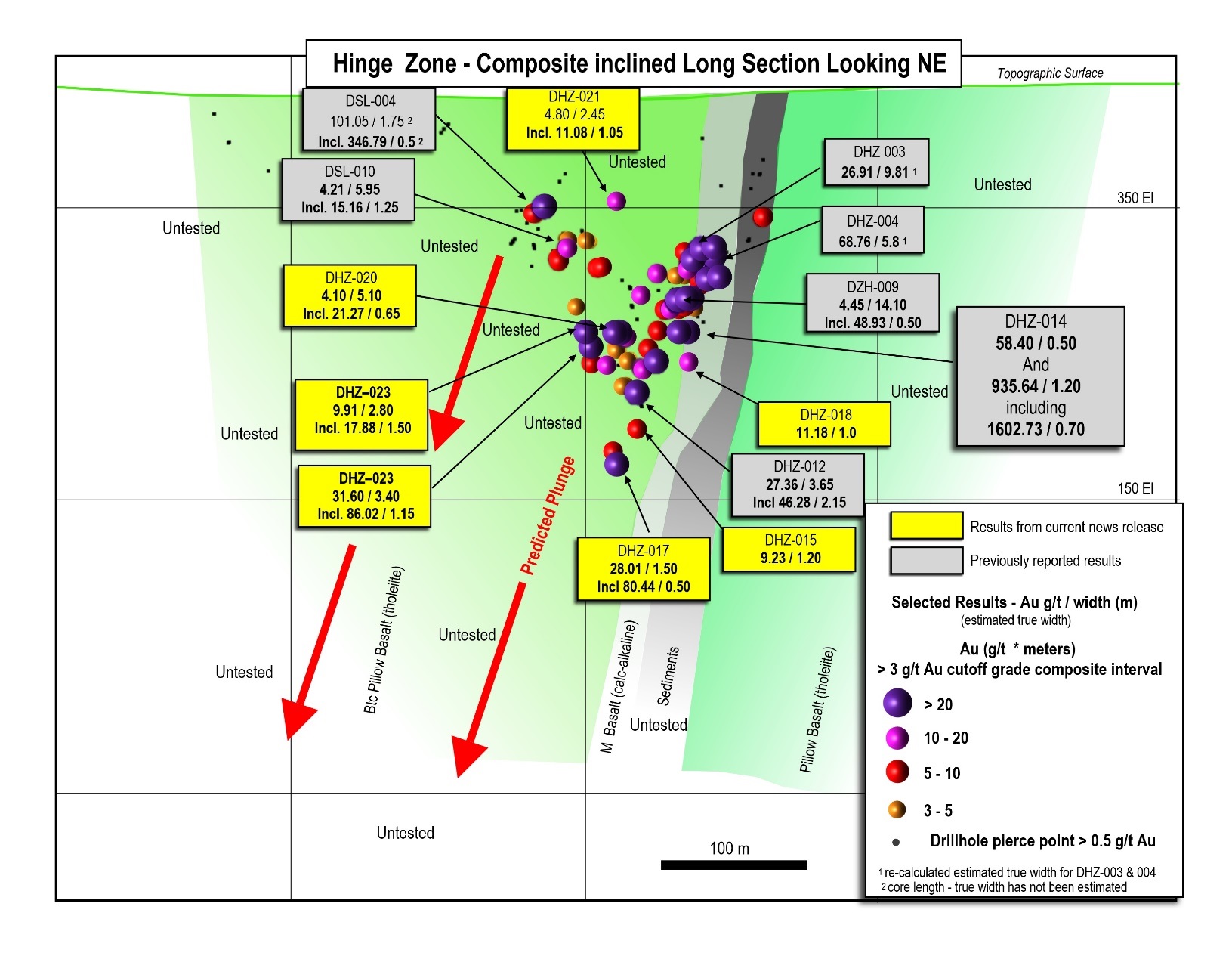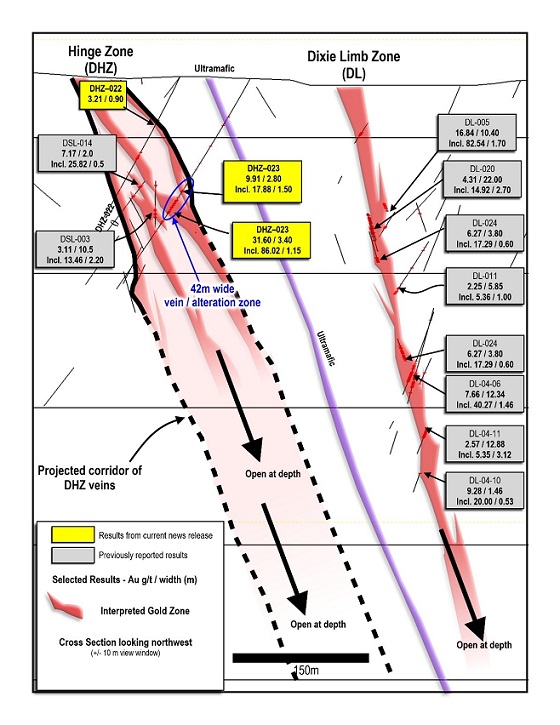
Great Bear Resources (GBR.V) released a batch of drill results from its Dixie Hinge Zone in Ontario’s Red Lake Gold district, which further validates the company’s exciting gold discovery in this very prolific region.
Hole 23 was the highlight of the release as Great bear encountered a 42 meter thick zone of alteration which hosts multiple mineralized quartz veins over a vertical depth of 37 meters (from 121 to 158 meters). Some of those veins once again had an exceptionally high gold grade with for instance 3.4 meters containing 31.6 g/t gold and 2.8 meters of 9.91 g/t gold (the 9.9 g/t is typical Red Lake grade stuff) including higher grade intervals of 1.75 meters containing almost 2 ounces of gold (!) per tonne of rock as well as 1.5 meters of 17.88 g/t gold. Great Bear’s updated interpretation now also combines the South Limb an Hinge zones as just one continuous vein set.
Unfortunately Great Bear is only able to highlight just a few holes, but this week’s press release which included the assay results of 8 holes contained several additional gold-bearing intervals, some are narrower than others, but all intercepts occurred within a vertical depth of 200 meters. The importance of the shallow mineralization shouldn’t be underestimated as this will have a hugely positive impact on the potential economics of this project later on.

Of course, it’s still very preliminary to even think about a development scenario right now, but with a success ratio of 100% (all 38 drill holes along strike have now encountered gold!), it’s becoming very clear Great Bear Resources is sitting on a prime piece of real estate in the gold camp as the Dixie project seems to have everything: it has size (mineralization has been confirmed over a strike length of 350 meters and has been chased to a depth of 200 meters but the veins generally appear to remain open at depth), it has the right grade (60% of the holes have encountered grades of in excess of 10 g/t) and access to existing infrastructure and technical know-how (Red Lake is a mining hot spot).
It’s still very early days, but if we would run a quick back-of-the-envelope calculation with a strike length of 350 meters, a depth of 200 meters and an average width of 5 meters (this is relatively conservative as the mineralized zones appear to pinch and swell, so Great Bear still has a lot to follow up on to determine the actual structure of the gold veins), we end up with a total tonnage of almost 1 million tonnes. That’s an excellent start and you should keep in mind this is just the Hinge Zone, and the Limb zone on the other side of the ultramafic will add a considerable amount of tonnes.
Great Bear is on the right track and thanks to its cash position of in excess of C$12M, the company remains fully funded for its exploration plans in 2019 and 2020 (but we wouldn’t mind if Great Bear would raise an additional C$5M in flow-through funding at C$5/share). We are now really looking forward to see more results from the ongoing 30,000 meter drill program as the Hinge Zone just keeps on giving.
Go to Great Bear’s website
The author has a long position in Great Bear. Great Bear is a sponsor of the website. Please read the disclaimer

